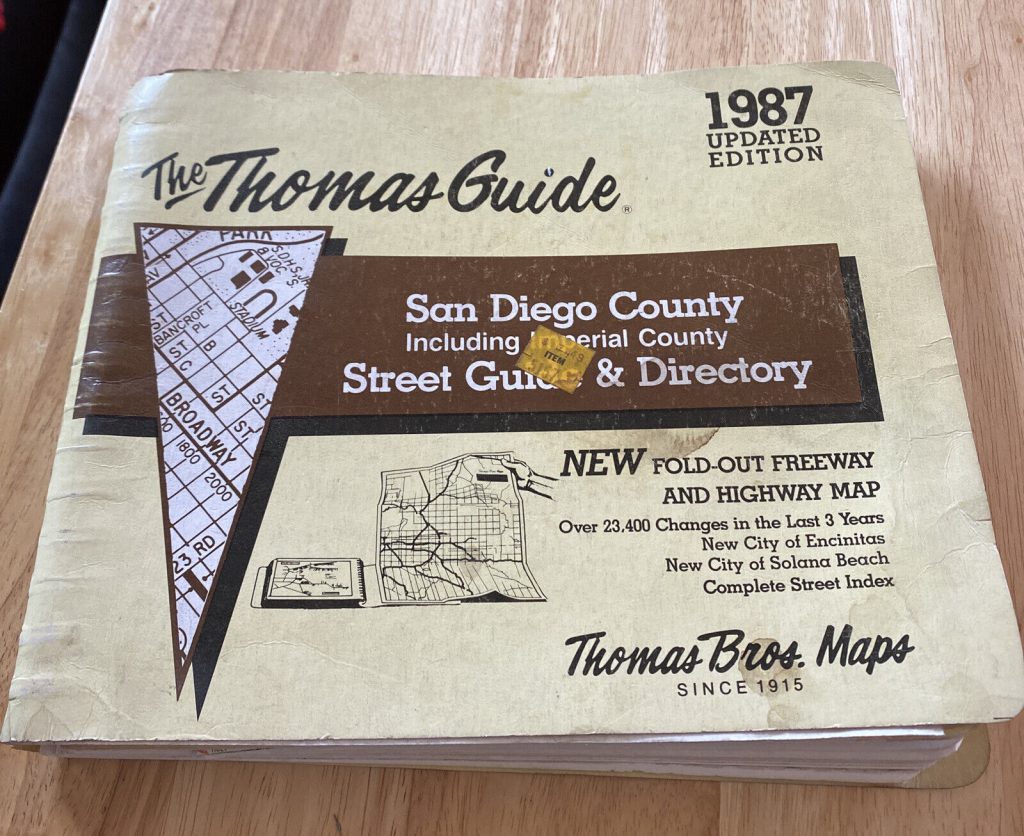In this post I discuss why you might get a verbal “yes” from a “qualified” prospect… and never hear from them again; and how to keep that from happening.
Before we had MapQuest, Google Maps or in-car navigation systems we had something called The Thomas Guide.
My mom is amazing and I thought it was magic that she could use The Thomas Guide and navigate our family’s 1989 Chrysler Grand Caravan to far away places… like Marshall Scotties.
What was true then and is still true now is that in order to get where you want to go you have to know where you are.
That makes sense, right?
The directions for getting from point A to point B can be completely different depending on where point A is.
The starting point matters.
The discovery phase is arguably the most important part of any high-ticket sales interaction. This is true in real estate, car sales, SAAS sales, and virtually any other high-ticket sales operation.
The discovery phase is where you figure out the prospects starting point.
Your prospects point A determines how you direct them to their goal… point B.
Figering out point B is easy because it’s just a goal. It’s where your prospect wants to be.
Point A can be tough, because in order to figure out where your prospect is they have to tell you… and sometimes *for whatever reason* there may be a huge difference between where the prospect says they is, and where they actually is.
Have you ever had plans to meet someone and they’re late? So you call them and they tell you they’re “around the corner” when really they haven’t even started heading your way? Something like that.
The prospect may not have bad intentions and there are a ton of reasons why that gap between where they are and where they say they are exist.
![]() They may have a hard time facing the reality of where they are.
They may have a hard time facing the reality of where they are.
![]() They may not actually know where they are.
They may not actually know where they are.
![]() They might believe that the gap between where they are and where they say they are can be overcome in just a “few days/weeks/months”.
They might believe that the gap between where they are and where they say they are can be overcome in just a “few days/weeks/months”.
![]() They might know that if you knew where they truly were you would disqualify them.
They might know that if you knew where they truly were you would disqualify them.
Whatever the reasons, the result is the same. A prospect you believe is a homerun is ghosting you.
So… how do we keep this from happening?
Make disqualification a positive experience.
Here’s how:
- Start by being transparent: Be transparent about your criteria for disqualification from the beginning. Share the criteria upfront, whether it’s a lack of budget, mismatched goals, or a lack of fit for your product or service.
- Offer alternative solutions: If you find that a prospect doesn’t fit your criteria for a successful partnership, offer alternative solutions. This could be other products or services that may fit their needs or recommending other companies that may be a better fit.
- Show empathy: Disqualification can be disappointing, so it’s essential to show empathy and understanding for the prospect’s situation. Acknowledge their efforts and time invested in the process and express your appreciation.
- Provide feedback: It’s always helpful to provide feedback on why a prospect didn’t meet your criteria. This feedback can help them improve and increase their chances of success with other companies in the future.
- Stay in touch: Even if a prospect doesn’t qualify at this time, it’s important to stay in touch. Offer them a subscription to your newsletter or blog, connect with them on social media, or invite them to events. This way, they’ll remain aware of your company and its developments.
- Be respectful and professional: It’s essential to remain professional and respectful throughout the disqualification process. Always show gratitude for the prospect’s interest in your company, and maintain a positive and professional demeanor.
- Leave the door open for future opportunities: Let the prospect know that you’re open to revisiting the partnership in the future if circumstances change. This way, they’ll feel valued, and it could lead to future opportunities for both parties.
By following these steps, you can help prospects view the disqualification process as a positive experience, even if it doesn’t lead to a partnership at this time.

